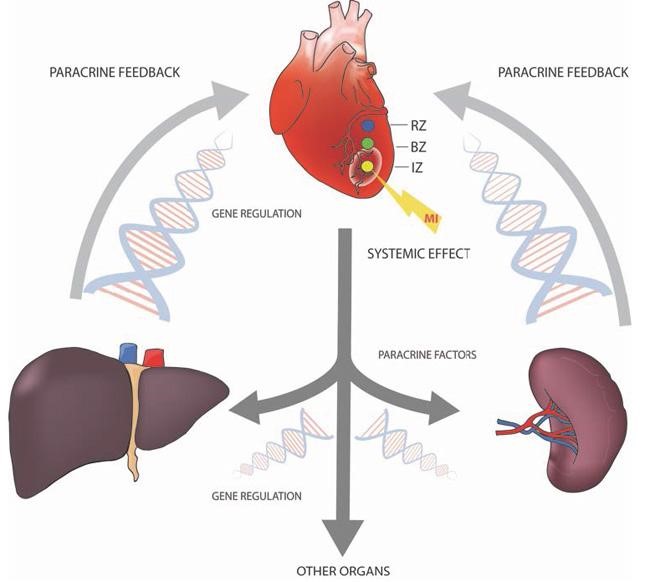When your heart’s coronary arteries become blocked, the result is usually reduced blood flow. This is called myocardial ischemia (or cardiac ischemia) and reduce your heart’s ability to pump efficiently and cause damage to your heart muscle. Subsequently, this also leads to the activation of inflammatory mechanisms and results in changes in the size, shape, structure, and function of the heart (ventricular remodeling), and the potential for coronary artery blockages to affect other organs. However, little is known about what effect these changes have on surrounding tissue and other organs. Researchers conducted a study to find out using bioinformatics, as discussed in Volume 8, Issue 37 of the journal Oncotarget.
Bioinformatics is the application of computer science data collection and computational models to collect and analyze complex biological data such as genetic codes. In a model they created, researchers used a technique that looked at the expression of thousands of genes at the same time, called a microarray, to detect which sets of messenger RNA (mRNA) were expressed by certain groups of genes during the heart injury.
They found that there were 338 changes to spleen tissue following the heart blockage, 856 changes to the liver tissue, and 8,903 to genes in the muscle tissue of the heart (myocardium). Based on these changes, the researchers determined that there were patterns in gene-regulation within the first 24 hours after the blockage, most likely due to changes in key proteins involved in the process of relaying messages from DNA into RNA (transcription). In other words, researchers saw pattern changes in the way genes communicated after a heart injury.
The image below shows how multiple organ systems are involved in the body’s response to a coronary artery blockage. When there is a heart blockage, the injury does not occur to just the heart muscle, but to other organs as a result of these changes in the messages, via proteins, that the genes receive. When proteins that are synthesized by one cell spread to neighboring cells, this event is called a paracrine interaction, and the proteins involved are considered growth and differentiation (paracrine) factors. A variety of organ systems are involved in the coordination of the organism’s response to myocardial infarction by the production and release of paracrine factors. For initiation of this paracrine feedback loops a variety of transcription factors are regulated in different organs.
This research suggests that a variety of organ systems are involved in the coordination of the body’s response to heart injury resulting from blockage (myocardial infarction). Understanding of this process and categorizing these changes gives researchers a better picture of the genetic and molecular signals that might play a central role in the systemic response to myocardial infarction.




